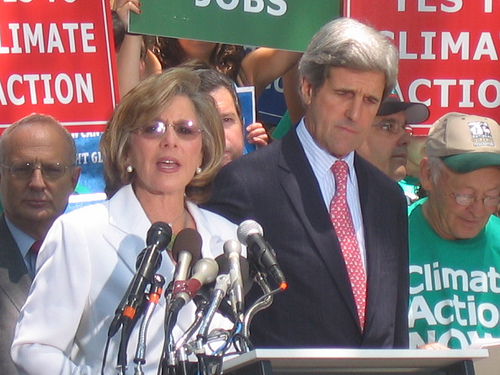The three senators working to craft an energy and climate bill met with representatives from industry groups on Wednesday evening to share details of their forthcoming legislation. From the leaks that have come out of the meeting, it sounds like their bill will be very industry-friendly.
Greenwire reports that industry sources said that the draft language they saw from Sens. John Kerry (D-Mass.), Lindsey Graham (R-SC), and Joe Lieberman (I-Conn.) would call for a goal of reducing emissions 17 percent below 2005 levels and 80 percent by 2050. Utility regulations would begin in 2012, and other major sources would be phased in beginning in 2016. There would also be an upper and lower limit on the price of carbon permits, often referred to as a price collar, of $10 to $30 per ton.
Industry representatives also said the bill would take away the EPA’s ability to regulate greenhouse gases under the Clean Air Act, and halt emissions programs already underway in states – two measures that would significantly handicap future efforts to limit emissions.
The head lobbyist for the U.S. Chamber of Commerce, Bruce Josten, told reporters after the meeting that he believes the bill will be “largely in sync” with what most industry types would like to see. The Chamber, of course, has been one of the most formidable foes of climate legislation to date. In addition to the Chamber, the senators also met with the Edison Electric Institute, American Petroleum Institute, and Portland Cement Association.
The Hill also included this tidbit from the meeting:
The senators are also planning to add sweeteners–such as major financial support for new nuclear power plants and “clean coal” projects, as well as wider offshore drilling–to attract support from industry and centrist Democrats and Republicans.
The signals coming out of this meeting are not very good in terms of climate, though Kerry had already scaled back expectations on that front. (Admittedly, they haven’t been high for quite some time.) At this point, though, the senators are still circulating an 8-page outline, not full legislation, so a lot of the details aren’t yet clear. The senators aren’t expected to release a real bill for another few weeks. They’re also meeting tomorrow with environmental groups to talk over the draft, so there may be more information coming out of that meeting.













